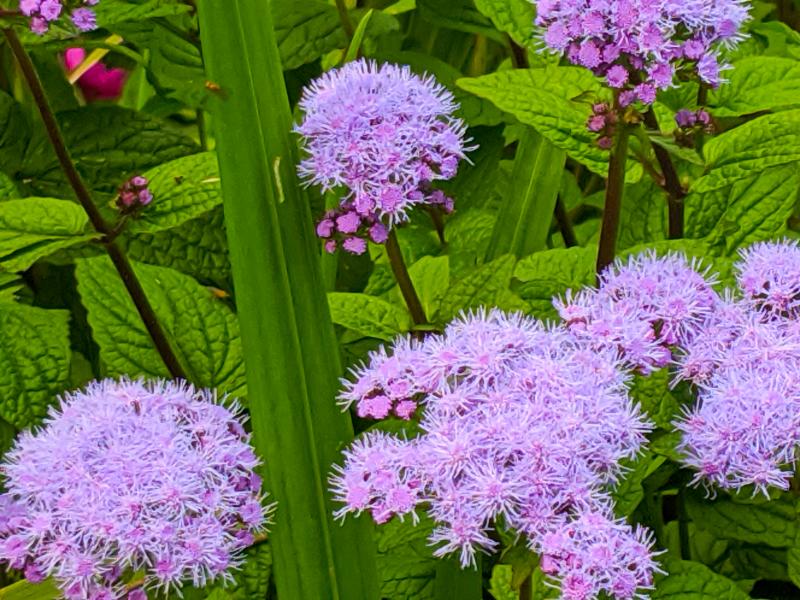Mill Pond Garden, a holistic public botanical garden on Red Mill Pond, will share fall favorite flowers with an open garden day from 10 a.m. to 12:30 p.m., Sunday, Oct. 17. For tickets, go to millpondgarden.com.
The garden will feature hardy and annual chrysanthemums; sweeps of native white frost aster, important to bees and butterflies; native eupatorium conclinium, aka mist flower; roses; many large colocassias including the rare blue Hawaii; deciduous holly berries ripened to color; some camellias starting to bloom; and the fall-blooming vines of cardinal flower and morning glory. One may also see late hibiscus, ornamental grasses in bloom and more.
Chrysanthemums, concliniums and asters are the blooming stars of the autumn garden. The old-fashioned hardy chrysanthemums, which are perennials, bloom about twice as long as the annual chrysanthemums sold in box stores. All morifolium chrysanthemums, the mound shaped ones seen everywhere in fall, used to be winter hardy, meaning they will survive the winter cold and resume growing in spring. Plant breeders bred hardiness out of them and made them annuals, killed by the first frost.
Mill Pond Garden uses a few of the annual mums for accents, but also has the hardy perennial mums as permanent bedding plants; they are much preferred by pollinators. Hardy chrysanthemums are available locally from Pepper’s Greenhouses in Milton, and also may be purchased online. Check the label to be sure it says hardy.
Now is the time to plant hardy mums and asters, and most other garden plants, shrubs, trees and perennials. Autumn is ideal for planting because it is followed by cool temperatures which roots prefer for growth and establishment.
When growing perennial chrysanthemums or asters, or the native eupatorium conclinium, gardeners must be sure to pinch them back halfway around June 7-10. To render them even bushier, pinch tips back again about three inches off the top, on or near July 1. One can find and buy perennial asters in reputable big nurseries or online. Aster is now renamed symphyotrichum, and Novae-angliae, New England aster, the most popular variety, is a native.
Aster amellus, the European Michaelmas daisy, a perennial herbaceous plant, is an excellent addition in local gardens for pollinators and color lasting many weeks. Mill Pond Garden prefers the native frost aster, or symphyotrichum pilosum, as the best choice anywhere and best for native pollinators. They exist only in white flowers with gold button centers but bloom for four weeks when bees most need nectar, from late September to late October. Another native perennial aster worth having is aster frikartii monch, which is a nice blue, disease-resistant and blooms from late June to late September, best in full sun. Monch’s aster is important to migrating monarch butterflies, as well as bees and other pollinators.
Mill Pond Garden assures local gardeners that many non-native plants are excellent choices if they offer benefits to pollinators and wildlife, as many do. Many plants now include label or online information about such benefits. Wildlife needs all the help it can get.
Visitors to Mill Pond Garden may also see water and land birds, basking turtles, frogs, rabbits and more in this National Wildlife Federation-certified wildlife habitat. Visit the website gallery to see photos of such delights as otters, bald eagles, herons, flying squirrels, possums and snapping turtles. Two baby snapping turtles have taken up residence in the small pond at the end of the stream. A horticulturist will be on duty to answer questions.
The garden welcomes serious volunteers. The Mill Pond Garden staff is vaccinated. Visitors are asked to maintain social distancing.
October is the time to eliminate winter weeds by pulling or careful spot herbicide treatment. At this time of year, any chemical travels downward to plants’ roots and will hinder weed germination in lawns and beds. Using chemicals should only be done if the weed problem is widespread. For few weeds, just pull them.

























































